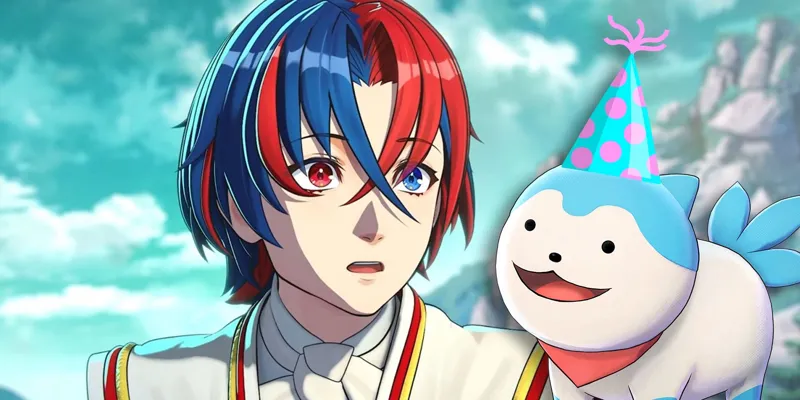The Fire Emblem series has become one of Nintendo's more popular franchises over the past decade, growing to earn several different character representatives in Super Smash Bros. Ultimate and consistently releasing new mainline and spin-off titles. Fire Emblem Engage has now been out for a year, and while it brought a lot of great new ideas to the series, many players felt like it was a step back from Fire Emblem: Three Houses. As such, Fire Emblem Engage still seems to live in the shadow of its predecessor, never reaching the same levels of popularity as Three Houses.
One of the best comeback stories in gaming is the way the Fire Emblem series went from being nearly canceled to one of Nintendo's flagship franchises after the success of the Nintendo 3DS' Fire Emblem Awakening. Now, over a decade later, the franchise is still going strong, but there is a clear division in the fan base between those who prefer the classic style of Fire Emblem titles and those who prefer the series' modern entries. For many players, Fire Emblem Engage was seen as a return to the pre-Awakening era of the franchise, which made the game divisive among fans of the recent entries.
Fire Emblem Engage Failed to Match the Success of Three Houses
Fire Emblem Engage's Removal of Social Elements Sparked Controversy
While the Fire Emblem series has always been a tactical RPG at its core, part of what made the post-Awakening era of the series so popular was the social elements added to subsequent entries. Fire Emblem Awakening and Fire Emblem Fates both included a mechanic that allowed players to marry two units together if they achieved S-Rank support with each other, resulting in the ability to recruit their child as a unit later down the line. Fire Emblem: Three Houses dialed back this mechanic, but introduced an entire Persona-like calendar system along with various activities players could participate in around the hub world of Garreg Mach Monastery.
In Fire Emblem Engage, the calendar system of Three Houses was removed and, although there was still the Somniel that acted as a hub world, the social activities players could participate in were far more limited. Instead, Fire Emblem Engage returned to the classic design of having chapters unlock one after another, becoming accessible via the world map and making returning to the Somniel optional. While this streamlined the gameplay of Fire Emblem Engage, many players felt that it wasn't as robust of an experience as Three Houses and that the addition of some optional social elements felt like they were shoehorned in as an afterthought.
Three Houses' Multiple Story Routes Made Engage Feel Barren by Comparison
Another popular aspect of Fire Emblem: Three Houses was the multiple story routes players could choose to follow based on their choice of house to lead. There were four total routes players could follow and each presented a very different view of the game's conflict, essentially allowing Fire Emblem: Three Houses to tell four stories within one game. Not only was the number of narrative routes impressive, but the character development and plot twists contained in each route made for an emotional experience regardless of which route the player chose.
Compared to Three Houses, Fire Emblem Engage's linear narrative felt a lot more by the numbers for the Fire Emblem series. The game's characters also were much more one-note and didn't have as much growth, nor as personal connection to the game's central conflict as Three Houses' characters. While there were some exceptions, such as the struggle characters like Diamant and Alcryst had to endure after losing their father, the overall narrative complexity of Fire Emblem Engage wasn't on the same level as Three Houses, leading many fans who enjoy the series for its stories to be disappointed.
Fire Emblem Engage's Gameplay Wasn't Enough to Elevate it Past Three Houses
Where Fire Emblem Engage really shined was in its core gameplay, boasting some of the most interesting tactical combat the series has ever seen. The big focus of this entry is the Engage mechanic that allows units to synchronize with an Emblem Ring and gain new powers granted by that ring's Emblem. This mechanic allowed several popular characters from the series' past, like Marth, Ike, and Celica to return in the form of Emblem Heroes, who could grant their unique skills to the character equipped with their Emblem Ring, opening the door for even more complex strategies than past entries.
Fire Emblem Engage also brought back a classic mechanic of the franchise in the weapon triangle, which created a rock-paper-scissor-style system of giving certain weapon types an advantage over others. Along with the return of the weapon triangle was the new Break mechanic which allows units with the weapon type advantage to disarm their opponent after attacking, preventing them from counterattacking. The combination of these new mechanics made Fire Emblem Engage a dream for fans wanting to dig into deep, strategic gameplay, and helped the game stand out from the rest of the series.
However, as satisfying as these new gameplay mechanics were, they weren't enough to make up for the rest of the game's shortcomings. Fans of the classic entries in the series who preferred the challenging tactical gameplay of older titles welcomed these new mechanics, but fans of modern entries who enjoyed the franchise for its characters and story weren't as impressed by their addition. Overall, a lot of the risks Fire Emblem Engage took with its combat really paid off, but they were overshadowed by the game's shallow characters, lukewarm story, and half-hearted social elements.

